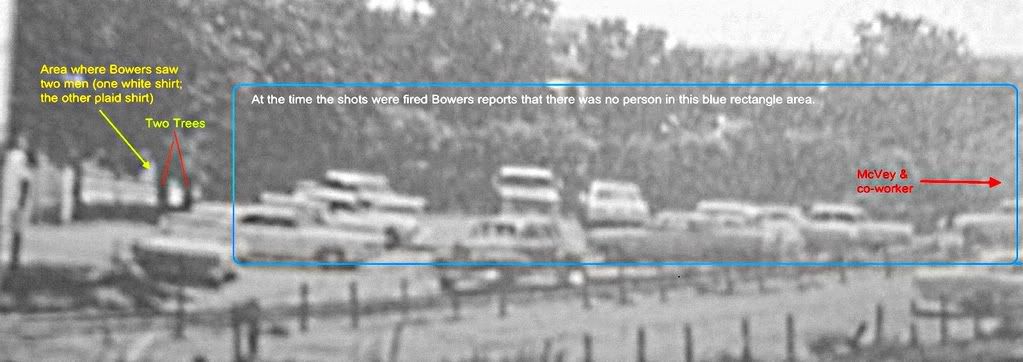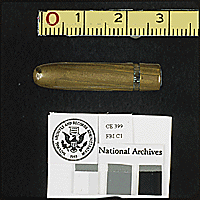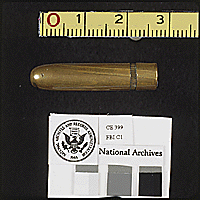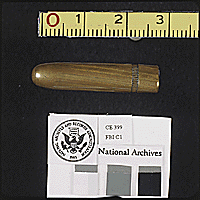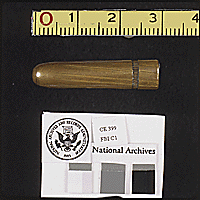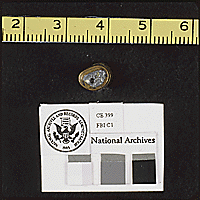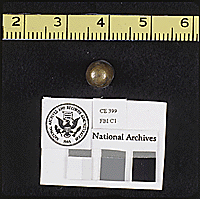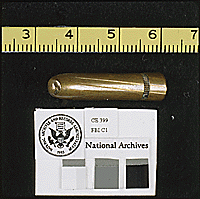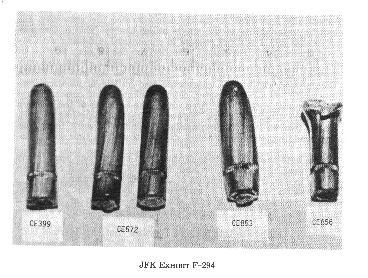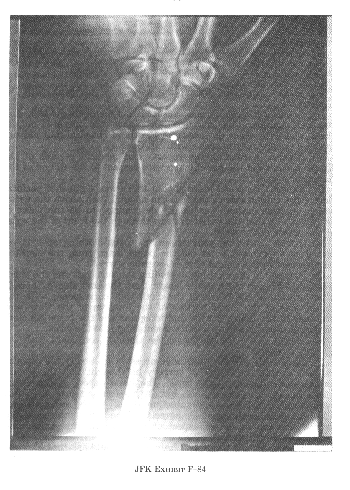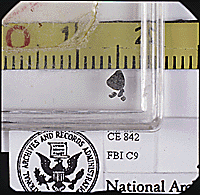CHRIS, YOU WILL READ HERE THAT THE BACK WOUND BULLET NEVER TRAVERSED THE PRESIDENT'S BODY AND EXIT THROUGH HIS NECK.
Here's Secret Service Agent Roy Kellerman (who sat in the front seat of the Presidential Limo), confirming that it was Dr. Pierre Finck who found the back wound:
Mr. Specter.
When did they lift him up and first observe the hole in the shoulder?
Mr. Kellerman.
They had been working on him for quite some time, Mr. Specter--through the photos and other
things they do through an autopsy. And believe it was this Colonel Finck who raised him and
there was a clean hole.
(WC)
Floyd Reibe recalls Finck examining the back wound. He seems to have no memory of anyone examining it before Finck's
arrival:
[15] RIEBE: Well, when they sat him up -
[16] DSL: Yeah.
[17] RIEBE: - right after, I think it was
[18] Colonel Finck, an Army ballistics specialist, came
[19] in.
...
Q: Did you observe any wounds on any other part
of President's Kennedy's body?
A: Yes, in the back.
Q: What did you observe on the back?
A: Well, it looked like - it looked like a
bullet hole.
But when, I think it was, Colonel Finck
tried holding that with his finger, it didn't go
anywhere or so they said.
Q: So if I understand correctly,
Colonel Finck
put his finger into the wound to try to see how far
down it would go, but it didn't go very far?
A: It didn't go very far. (ARRB)
O'Connor said for a while there was no discussion of any other wounds until later on when they found
the
bullet wound in the "...back in the neck... just above C-7." O'Connor said it was approximately
dead center in the mid-line of the back...
O'Connor added that he didn't‘think the doctors were trying to establish anything by the autopsy, saying they were
"...just glanced at the throat wound..." and later found the hole in the back.
(Paul O'Connor HSCA interview)
During the latter stages of the autopsy, Dr. HUMES, located an opening which appeared to be a
bullet hole which was below the shoulders and two inches to the right of the middle line of the spinal column.
...
Also during the latter stages of the autopsy, a piece of the skull measuring 10 X 6.5 Centimeters was brought to
Dr. HUMES .. On the basis of the latter two developments, Dr. HUMES stated that the pattern was clear that one
bullet had entered the President's back and had worked its way out of the body during external cardiac massage
.
(Report by Francis X. O'Neill)
Q: In other words, you would have told Arlen
Specter that the doctors firmly believed that the
bullet had worked its way out duting cardiac
massage?
A: Yes. Now, bear in mind, also, that
this whole situation with talk about external cardiac
massage was taking place not at the beginning, not
in the middle, but
towards the end of the autopsy
itself. And that they were very interested to know
what that wound was in the back .And this is the
only explanation which they had.(O'Neill, ARRB)
Q: Let’s turn to what we’ve been calling the back wound.Whcn was it -When, during the course of the autopsy,
was it discovered that there was a wound in what you’ve been calling the
back?
A: Well, I don’t think it was right at the initial start of the autopsy. I know it was after the original
incision was made. But when they raised him up, then they found this back wound And that’s when they
started probing with the rubber glove and the finger, and - and also with the chrome probe.
(Sibert ARRB)
A: He was on his back and I examined all external areas of the cadaver. While on the table I asked to have the
cadaver turned over so as to make an examination of the skin of the entire cadaver. (Finck,Shaw Trial)
“Who gave the order not to probe the throat wound?”
“Burkley. Burkley gave all the orders like that. He says, ‘Don’t do that because the family doesn’t want you to
do that.’ We didn’t even know there was a bullet hole in the back, his back.”
“You didn’t . . .“
“We didn’t even know it until about two hours into the autopsy.”
“That there was a hole in his back . . .“
“No. We turned him over and ‘Oh, look, there’s a hole!’ That’s . . that’s the way that night went. It was just
absolutely crazy!”
(Paul O'Connor , Livingstone Interview, HT2)
Document Provided to ARRB by Francis X. O’Neill, Jr. on September 12,
1997 Containing Recollections of Events Surrounding JFK Assassination :
"After completion of the procedure on the front of the
body we assisted in turning it over. One must realize that at
that the body had never been turned over in Dallas. We were
aware, from information furnished by Kellerman and Greer, that
external cardiac massage was performed by the attending Dallas
physicians. Upon viewing the rear of the President the first
thing that everyone noticed was the large scar on the President's
back due to. an operative procedure.
Jim Sibert noticed a small :
hole in the upper right rear of the back and pointed it out to
. Humes and Finck. They said it was a bullet wound. Humes and Finck
probed the wound with a surgical probe and their fingers. and
determined that since the extremity of the hole could be felt
there was no exit for the wound."
There is also this rather involved passage from Ebersole's interview with the HSCA
FPP, which indicates that
Dr Weston was of the belief that the back wound was not found until just before the
body was about to be sewn up :
Weston: [Quoting from the Sibert & O'Neill report] ". On the third page of their report they say specifically
that following the
removal of the wrapping it was ascertained that the President
clothing had been removed and it was almost apparent that a
tracheotomy had been performed; namely, in the top of his
skull. All personnel, with the exception of medical officers
needed in the taking of photographs and x rays were requested
to leave the .autopsy room and remain in the adjacent room.
The implication is then, he goes on to say, upon comple-
tion of X rays and photographs it was my understanding that
from the very beginning it was their intentions to take a
certain number of X rays at least of the head and neck and the
chest
which probably represents the first series."
IE, these 'early' x-rays were taken 'pre-evisceration' & were all the x-rays it was
initially intended to produce. He continues:
" Then it goes on to say X rays of the brain area which was removed,
half of the missile which appeared to enter the back of the
skull and disintegrated fragments could be observed along the side of the skull.
The largest description has to do with the examination of the skull.
Now then he goes on to say
during the latter stages of this
autopsy Dr. Humes located an opening which appeared to be
a bullet hole which was below the shoulders
to the right of the middle line of the spinal
column. This opening was probed by Dr. Humes with the finger
at which time it was determined that the trajectory of the missile had entered at a downward position for 45 to
60 degrees.
Further probing determined that the distance traveled
by this missile was a short distance inasmuch as the end of
the opening could be felt with the finger, inasmuch as a
complete bullet of any‘size could be located in the brain
area and likewise no bullet could be located in the back or
any other areas. An inspection revealed there was no point
of exit.
The'individuals performing the autopsy were at a
loss to explain why they could find no bullets."
Weston explains the second series of x-rays (post- evisceration) as being taken just after the back wound was discovered, in order to try to locate
this newly discovered missing bullet .This would indeed be very 'late' in the autopsy. He continues:
"And it was
subsequent to that time that I believe you took the post-
visceration autopsies. Now is that consistent?"
Ebersole is effectively sunk on his 'early back wound discovery', but he throws this back
at Weston:
"Dr. Ebersole.
Does it seem reasonable to you that a pathologist would carry out an autopsy of this
nature without looking at the front and back of the body? My remembrance is
that we were aware of the wound of entrance relatively early in the game."
To which the answer would have to be 'no', but that this
is exactly what appears to have happened. Baden comes in to rescue Ebersole:
"Mr. Baden. That is what he said,and that Dr. Humes probed...
Dr. Weston. No, no, no. [
Only Weston seems to understand the point he has just made..]
Dr. Ebersole. I did not say that.
Dr. Weston. It is in the latter stages of the procedure. As a matter of fact,
there is another record somewhere
that it indicates it was about the time that they were ready to sew the body up that they were washing it and they
then discovered the wound"
I wish I knew what document Weston is referring to. : )
Weston's analysis is consistent with the other accounts of the back wound being found
very late. This may explain how come the autopsists
did not immediately call the Dallas doctors about the tracheotomy as possible exit site.
It was simply too late to do so.
Midnight, or so.
Finally, what time was the well known phone call to the FBI lab made that 'solved the mystery' for Humes? (When
he heard that a bullet had been found on a Dallas stretcher.)
"Question: What time did Agent Sibert call Agent Killian at the FBI
Laboratory?
Answer:
Some time between 11:00 p. m., and 12:00 midnight"
(Sibert/O'Neill, summary of interview with Arlen Specter)
The autopsy began around 7.30pm. Finck arrived around 8 pm. If the back wound was found before Finck arrived,
then the back wound was an absolute unsolved mystery for no less than FOUR HOURS or so, and it took the FBI guys
four hours to pluck up the courage to call Killion to enquire about 'ice bullets' or 'the type of bullets that
fragmentise completely'.
On the other hand, if we believe Finck himself, Kellerman, O'Connor, Sibert and O'Neill, the back wound was
found relatively late in the autopsy, and the very late call to Killion becomes a little more rationally explicable.
According to Finck himself (
Finck, Letter to Gen. Blumberg ) the autopsy
was over by midnight.






